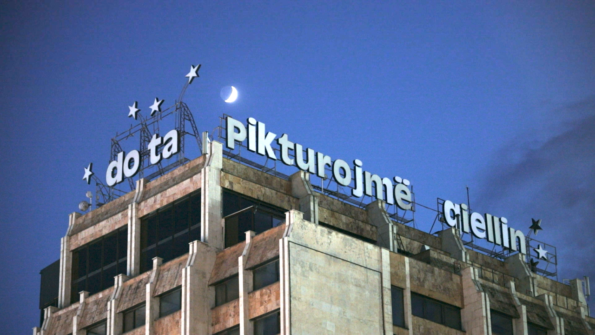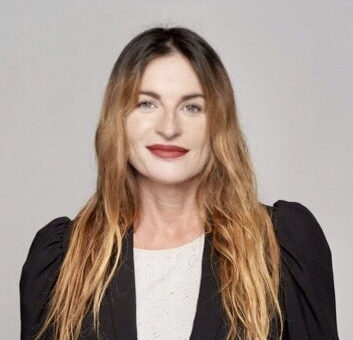Search
To search for an exact match, type the word or phrase you want in quotation marks.
A*DESK has been offering since 2002 contents about criticism and contemporary art. A*DESK has become consolidated thanks to all those who have believed in the project, all those who have followed us, debating, participating and collaborating. Many people have collaborated with A*DESK, and continue to do so. Their efforts, knowledge and belief in the project are what make it grow internationally. At A*DESK we have also generated work for over one hundred professionals in culture, from small collaborations with reviews and classes, to more prolonged and intense collaborations.
At A*DESK we believe in the need for free and universal access to culture and knowledge. We want to carry on being independent, remaining open to more ideas and opinions. If you believe in A*DESK, we need your backing to be able to continue. You can now participate in the project by supporting it. You can choose how much you want to contribute to the project.
You can decide how much you want to bring to the project.

With an extreme heat wave sweeping Europe, the war in Ukraine and growing global socio-political instability as backdrop, the 14th edition of Manifesta, the European nomadic biennial opened its doors on 22 July in Pristina, the capital of Kosovo.
This year’s central theme explores new practices and modes of collective storytelling, how we create stories and share them across cultures and communities; very appropriate for the current geopolitical situation. Pristina is the ideal host city for the nomadic biennial, Europe’s youngest capital —in a double sense: as the capital of a newborn country and because 50% of its population is under 25 years old— reinvents itself after a war based on conflicting historical and cultural narratives.
Following the Kosovo war (1998-99), that ended Serbian rule over the Balkan nation, the region became a UN protectorate, turning into an independent state in February 2008. For Kosovo, whose citizens can only travel to four countries without visas, Manifesta is a powerful “wake-up call” to the international community through art lovers, collectors, artists and journalists, who come from all over the world.
Among the many speeches made by politicians during the pre-opening days, there was a repeated demand for Kosovo to become an integrated part of the European and world community —Kosovo is currently recognised as a sovereign state by only 98 (within which is not Spain) of the 193 members of the United Nations. “Is it a sin to be born a Kosovar Albanian?”, asks Driton Hajredini, a native of Pristina and a Muslim, in his pieces Sin 1 and Sin 2 from the darkness of a confession booth in a German Catholic cathedral. Although the second priest tells him it may be a “structural sin,” it could be that these Christian priests will clarify why he and the rest of Kosovars are condemned to live as second-class citizens within Europe. Is it a punishment for the sin of being born in the wrong place?
Pristina strong bid and desire to become an “open-minded metropolis” and with the profound hospitality of its people, welcomed guests to the inaugural weekend with presentations, speeches, performances, concerts, and even an after-party. Over the past few days the feedback on the event from different art world actors has been overwhelmingly positive. Catherine Nichols, its creative mediator —note that the word curator is not used, has set up a joyful, yet serious and revealing collaborative exhibition, showing the work of 103 artists, of which over half are either Kosovan or from the Western Balkans —a term coined at the beginning of the 21st century to refer to the nations that made up the former Yugoslavia + Albania.
Manifesta 14 presents an extensive public programme and multiple interventions in the streets and squares, although its main venue is the Grand Hotel Prishtina, accompanied by 24 other venues around the city. The hotel is crowned by the starry installation by Petrit Halilaj, one of the most internationally known Kosovar artists. Inside, the exhibition occupies 7 floors (3rd to 9th) organised thematically under The Grand Scheme of Things: transition, migration, water, capital, love, ecology and speculation. Under the heading of capital are videos by the Spanish artists Lúa Coderch and Nuria Güell. Luz Broto presents the public and collaborative project Swap Keys. Highlights include visually satisfying piece by Albanian Adrian Paci, a powerful examination of the migration emotions, and Alketa Xhafa Mripa’s intimate In the Name of the Father, in which she bathes his elderly father. Biennial regular Lawrence Abu Hamdan presents an installation that continues his analysis on the testimonies of political prisoners. While emerging Kosovar artists Brilant Milazimi, Dardan Zhegrova and Doruntina Kastrati use painting, sculpture and immersive multimedia installations to introduce peculiar and sometimes disturbing worlds into the hotel’s long corridors and dusty rooms.
Grand Hotel Prishtina installations shown in order ascending floors. Photos: Majlinda Hoxha. Courtesy © Manifesta 14 Prishtina
Outside the hotel, in Rilindja, a former large publishing and press headquarters, it is located the installation Brutal Times by Turkish artist Cevdet Erek. The dilapidated, but with a special aura, socialist cinema Rinia has been recovered to show a programme of African cinema by Christian Nyampeta; in the adjoining courtyard there is an installation by the tamtam collective. The National Library of Kosovo, an architectural jewel and Balkan landmark with its metal mesh skin and 99 domes, hosts the RomaMoMa collective’s library. In the 15th century Grand Hammam, Chiharu Shiota has created an ethereal red thread installation with the handwritten personal stories of hundreds of Kosovars. And the large Gërmia Department Store is topped by Alban Muja’s installation consisting of a small house built on the roof.
Installations at Rilindja, Kino Rinia, National Library, Grand Hammam, Gërmia Store. Photos: Ivan Erofeev and Majlinda Hoxha. Courtesy © Manifesta 14 Prishtina
Pristina’s geographical and geopolitical importance, with its Ottoman architecture mixed with post-war neoliberal philosophy —it is said of most Iron Curtain countries that their cities passed from communist state hands into the hands of mafias— and where the legal and political paralysis of the 1990s resulted in a loss of sense of public space and a lack of recognition for what is common, has taken advantage of Manifesta’s other mission, that of reclaiming the model of the city based on “participatory urbanism” to reconstruct, redefine and reclaim a radicalised and diverse public space… which still seems to be today regarded as a cultural subversive act.
Manifesta 14 chose the design studio Carlo Ratti Associati (CRA) to carry out the sensitive renovation and relaunch of a disused library under the new guise of the Centre for Narrative Practise, where projects by Speculative Tourism or StoryLab are presented, and which has also secured funding to operate for the next 5 years. CRA has managed to make the commercial Korriku Street pedestrianised —at least during the 100 days of the Manifesta— and has also created the Green Corridor, another pedestrian pathway built on disused railway tracks with trees and plants, connecting the city centre with its industrial hinterland. In front of this corridor is Pristina’s largest post-industrial site, the abandoned Brick Factory, which has been cleaned, refurbished and intervened by the Berlin collective raumlaborberlin. Here they will hold eco-urban learning workshops. How the urban transformation vision will develop over the course of the biennial remains to be seen.
Centre for Narrative Practise, the Green Corridor, Korriku Str., Brik Factory. Photos: Ivan Erofeev. Courtesy © Manifesta 14 Prishtina
The show doesn’t stop in Prishtina, and 45 km away is Mitrovica, an epicentre of tensions between Kosovars and Serbs. There, on the river that divides the city, in the shadow of a bridge still patrolled by NATO soldiers is Stanislava Pinchuk’s installation Europe without Monuments, a thoughtful meditation on the positive potential and danger of monuments
Public space installations/interventions: Stanislava Pinchuk in Mitrovica, photo: Photo Marcello Maranza. Swap Keys by Luz Broto, photo: Ivan Erofeev. Susan Philipsz with Radio International Collective at Zahir Pajaziti Square, photo: Majlinda Hoxha. Ugo Rondinone at Adem Jashari Square, photo: Ivan Erofeev. Sislej Xhafa in the Partisan Martyr’s Monument, photo: Ivan Erofeev. Courtesy © Manifesta 14 Prishtina
One can only hope that Manifesta leaves a lasting legacy for both the artistic scene and wider community of Kosovo. A call for change and a truthful discussion about the direction of the city and Kosovo itself, but also as an example of rebirth of cities, art and architecture in Western Balkans. Since its inception in 1996 in Rotterdam, the nomadic Manifesta has examined, sometimes more successfully than others, the changing cultural topography of Europe through the prism and specific situation of each new host city. Next stop, the fifteenth edition of Manifesta in Barcelona in 2024.
Installations at Palace of Youth and Sports, National Gallery of Kosovo, Ethnological Museum, The Flat, Hertica School House and Prishtina Observatory. Photos: Majlinda Hoxha and Ivan Erofeev. Courtesy © Manifesta 14 Prishtina
Manifesta 14, until 30 October in Pristina (Kosovo).
[Featured image: Petrit Halilaj, When the sun goes away we paint the sky, 2022, © Petrit Halilaj, Photo © Arton Krasniqi]

María Muñoz-Martínez is a cultural worker and educator trained in Art History and Telecommunications Engineering, this hybridity is part of her nature. She has taught “Art History of the first half of the 20th century” at ESDI and currently teaches the subject “Art in the global context” in the Master of Cultural Management IL3 at the University of Barcelona. In addition, while living between Berlin and Barcelona, she is a regular contributor to different media, writing about art and culture and emphasising the confluence between art, society/politics and technology. She is passionate about the moving image, electronically generated music and digital media.
Portrait: Sebastian Busse
"A desk is a dangerous place from which to watch the world" (John Le Carré)